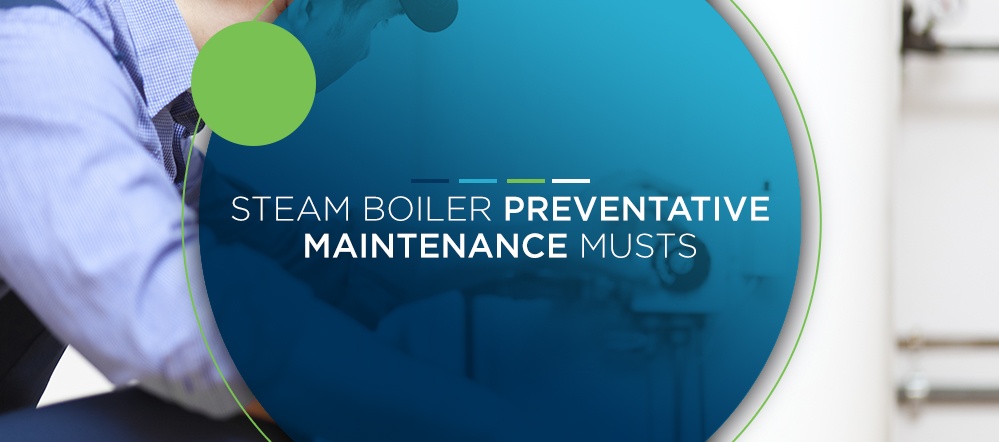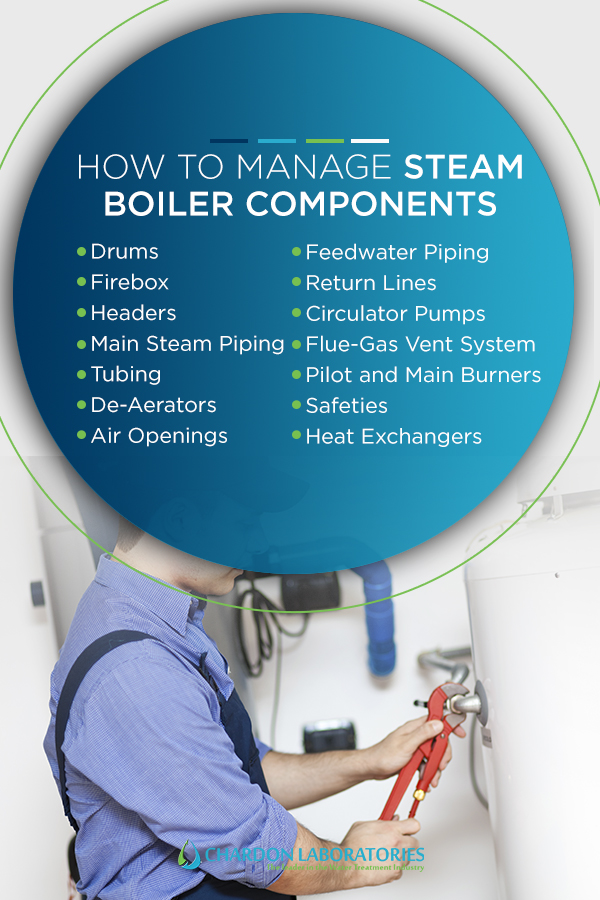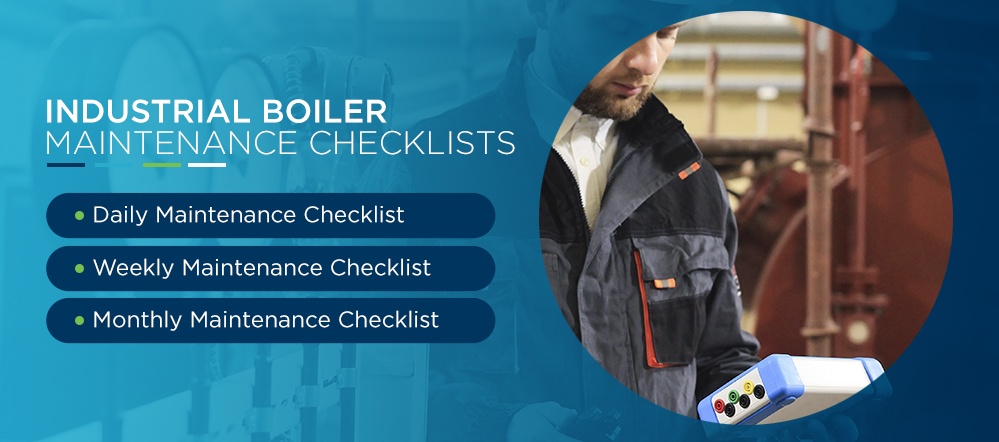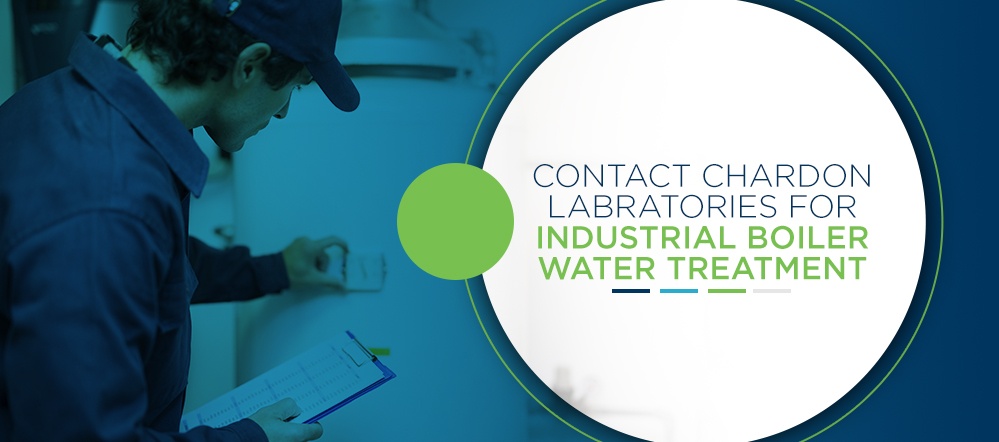
Industrial steam boilers are found in essential systems in almost every industry, from hospitals to food processing facilities. Boilers provide heat, hot water or both, and they must do so reliably to keep processes running smoothly. Due to their importance, preventative maintenance (PM) is necessary for all industrial steam boilers if managers want to maximize uptime and minimize repair and downtime costs. In this guide, we’ll discuss how an effective PM program can keep your facility’s operations running efficiently and maintain a healthy bottom line.
A PM program will cost your business money, so it’s important to understand how the benefits of maintenance stack up against the associated costs. The most obvious advantage of maintenance is preventing boiler failure, which can lead to hours or even days of expensive downtime in some cases.
However, you should also consider:
The advantages are significant, but many managers still wonder when the right time is to start a preventative maintenance schedule. PM programs are the most beneficial when system components develop higher failure rates and when repairs start costing more than implementing a program would. It’s also important to take into account the less obvious costs associated with component or system failure, like potential lawsuits and general loss of goodwill among your clients.
When creating a boiler preventative maintenance program, make sure these essential aspects are covered:
Here are three crucial reasons to implement a PM program:
The efficiency of your industrial steam boiler is directly connected to water quality. As the boiler converts water into steam, any impurities or oil present in the water will reduce the quality of the steam. Dirty water can also cause short cycling and wet steam. Both of these issues result in wasted energy and higher operating costs. Your daily steam boiler maintenance checklist should include checking all relevant gauges to identify if the boiler is dirty.
If water is moving around quickly and bouncing behind the glass, there is oil in the water. If water is dripping from the top of the gauge, the boiler is churning out wet steam. Wet steam doesn’t heat as quickly or efficiently, forcing the burner to run longer.
Boiler maintenance also includes having water chemically tested by professionals to verify that the right blend and concentration of treatment chemicals, such as scale inhibitors, are being used. The results of these tests, along with routine water monitoring, will indicate whether the water quality is adequate to stop premature corrosion, buildup of scale and other problems that will shorten the life span of the boiler or hamper its efficiency.
Blowdown is the process of periodically draining water from the boiler. This procedure is essential because solids dissolve in the makeup water as the boiler removes pure water in the form of steam. Solid buildup contributes to poor water quality and more energy usage, increasing corrosion and scale.
The bottom of the boiler contains the greatest amount of sludge. The skimmer drain valve enters the boiler slightly below water level, where the concentration of dissolved solids is highest. Skimmer blowdown is highly efficient and essential in controlling concentration cycles, while bottom blowdown is necessary to prevent dangerous sludge buildup. Proper blowdown is a central element of boiler maintenance, and you should consult an expert on how often to perform this maintenance task according to your particular system and application.
Insulation is central to the safe and efficient operation of an industrial steam boiler. It reduces boiler surface temperatures to help prevent the risk of employees being burned and keeps temperatures more consistent for increased energy efficiency in heating cycles.
There is a huge variance in the amount of insulation required and the material the insulation is made from. Depending on the size of the pipe and its temperature in operation, insulation could range from just an inch to several inches. Steam boilers commonly use these insulation materials:
Insulation maintenance includes inspecting the piping, boiler surfaces and fittings. Your inspections should entail looking for wet or deteriorated insulation and any areas of boiler surface corrosion underneath this compromised insulation. Post-maintenance checks are also important to ensure the insulation hasn’t sustained damage during the process.
Diagnostics are highly valuable as part of a preventative maintenance program. They can increase the boiler’s life span and its operating efficiency by allowing facility managers to catch and address problems early. Some diagnostics to incorporate include:
A diagnostics system allows managers to keep an eye on critical data that can indicate when a problem is on the horizon. This preventative approach keeps unexpected downtime to a minimum and provides a clearer picture of the boiler system’s overall health.

Every component in an industrial steam boiler has its own vulnerabilities and needs regarding maintenance. The following are the most important components to cover during routine maintenance:
The drum is the most expensive part of a boiler, and corrosion is the issue managers and technicians have to worry about most frequently. One form of preventative maintenance for the drum is wet fluorescent magnetic particle testing (WFMT). This method of inspection indicates the condition of welds and some ligaments. Should a WFMT reveal corrosion in the drum, an ultrasonic thickness test (UTT) can reveal the current thickness of the metal so that technicians can decide how to conduct repairs effectively or replace the part entirely.
A boiler’s firebox can rapidly accumulate soot, resulting in reduced heat transfer that drives down the system’s efficiency. Fireboxes need to be cleaned regularly to ensure the heat transfer surfaces remain clear.
Headers tend to suffer from corrosion or erosion as well as weakened metal. Maintenance for these components includes WFMT, a dry-powder magnetic particle test or both. A visual probe can help with evaluating cleanliness and finding blockages that obstruct the flow. Superheater headers and water-circuit headers should receive a visual inspection, as well.
Main pipes face the same dangers as headers. The main method of maintenance for these components is to check horizontal and non-draining runs with a probe or ultrasonic thickness test to identify any pitting or corrosion taking place inside the pipes.
Failing tubes are a common cause of unexpected boiler downtime. Deposits can accrue steam-side or water-side, which inhibits heat transfer. Tubing can also suffer from blockage, fatigue and corrosion. A maintenance inspection should look for any damage to tubing surfaces, swellings, distortions or discoloration. Tubing is another area where UTT can provide valuable information.
Most de-aerators are split into two parts. The first section separates dissolved gas from the water. The other section acts as storage for the de-aerated water, and technicians may add chemicals before the water moves to the boiler’s higher-pressure system. De-aerators should undergo WFMT regularly to check whether they have sustained corrosion during operation.
Air openings are part of the combustion process. Maintenance for these openings consists of simple visual inspection and removal of any debris or blockages.
Most facilities don’t have the luxury of using completely clean feedwater, and rely on municipal water Most facilities don’t have the luxury of using completely clean feedwater and rely on municipal water supplies. In these supplies, there are typically solids that may be suspended or dissolved. Dissolved gases, sediment and microorganisms are other issues to consider. Here are some of the issues that can occur with badly treated water:
For this area of piping, corrosion and scale are the issues to worry about. Corrosion is especially likely over time, as the pressure of the flow through these pipes is high. To avoid piping failure in this component, the maintenance technician should use a video probe wherever possible to conduct a visual inspection of the pipe interiors. If there is a reason to suspect corrosion, a UTT can confirm the amount of damage done.
Corrosion can severely affect return lines as rust forms and follows water flow down the return. This leads to clogging that causes condensate to rise upward into the system’s mains. Flushing return lines regularly and monitoring for corrosion with periodic UTTs is important for maintenance. To keep corrosion to a minimum, the maintenance program should take advantage of chemical treatments specific to return lines.
A malfunctioning circulator pump inhibits the efficiency of water circulation or stops circulation altogether. Circulator pump maintenance involves listening for unusual noises that may indicate failing components, like bearings or valves. Technicians should also thoroughly check for leaks, which are frequently the result of corrosion in mounting bolts, valves and seals.
This set of components vents gas to the outside, making it a critical part of the boiler’s safety system. The main objective of maintenance in this area is preventing any leaks, obstructions or excess pressure on the boiler. During maintenance, the technician will look for and remove blockages, fix leaks and clean the system. If your boiler’s stack is long, consider making the run shorter or setting up fans to facilitate better flue gas movement.
The pilot and burners frequently suffer from intermittent or otherwise improper flames and discoloration from dust buildup. When a maintenance technician addresses these components, they will give the burners a visual inspection. They will also remove the burners, brush them, vacuum them and adjust the fire rate. The thermocouple should glow red and remain immersed in the cone.
The main things to look for on the safeties are scale and general wear and tear. You can confirm safeties are working by performing a bottom blowdown. The blowdown will test the low-water cutoffs. The frequency of blowdowns varies based on how much condensate comes back to the boiler and the quality of your water.
Bottom blowdowns should begin with both valves totally shut. First, open the knife valve. Then, open and close the gate valve. For boilers with both a front and back drain valve, make sure to do this on both sides. Then, perform the procedure three times in succession. This moves the water around in the boiler and encourages sludge to move toward the drain.
In addition to regular blowdown testing, technicians can perform preventative maintenance by cleaning the site glass and testing scanners by removing the flame and observing whether the boiler ignites.
A boiler’s heat exchanger is highly susceptible to a buildup of mineral deposits, as cold and hot water constantly flow over metal plates. This results in scale that reduces space for water flow, increasing the pressure drop across the exchanger and forcing the pump to work harder to achieve the required flow. Maintenance for heat exchangers consists of ensuring the best water quality to reduce the rate of buildup and descaling the plates frequently.

Since boiler systems are so complex, it’s crucial to monitor them continuously. A PM program will enable managers and technicians to identify when the system is unsafe or operating inefficiently. Some aspects of maintenance should be conducted daily or almost daily. Others should be done once a week or once a month, in addition to steam boiler annual maintenance.
Below are several industrial steam boiler maintenance checklists to go through each day, week, month and year.
A technician should be on-site every day to do the following:
Although you may not need to take water samples every single day, the more information you have about your water quality, the better.
Weekly boiler maintenance involves choosing a day each week to do the following:
These weekly tests are often the most time-consuming, yet the most important to safety and function.
There are a few things to check off the maintenance list once each month. The technician should check:
During yearly inspections, technicians should perform the following tasks from this steam boiler maintenance checklist:

Maintaining industrial boilers doesn’t have to be a fully in-house job. Chardon Labs can provide a comprehensive boiler water treatment system to keep your boilers from becoming corroded, pitted or otherwise damaged due to poor water quality. Our technicians are ISO-certified and equipped to handle a variety of water treatment services — from the free survey evaluating your current system needs to the regularly scheduled testing and treatment your system requires to stay healthy and efficient.
Our cutting-edge electronic service reporting system tracks everything we do from the moment our technician arrives at your facility. Your eReport is available the same day we perform services and indicates exactly what the technician did and when they did it. Chardon Labs doesn’t just sell chemicals — we offer clean systems to keep your costs low and your boilers operating with minimal waste. To learn more about setting up the right water treatment schedule, contact us at (380) 224-7395 or get in touch online.